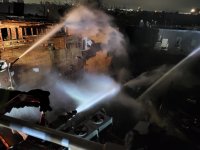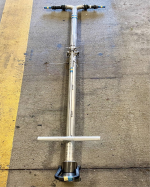- Joined
- Mar 30, 2023
- Messages
- 969
I may be wrong but the Computers in the PSAC go to a 10th Alarm, it was probably for publicity reasons, because the last alarm that went above the 5th was Queens Box 7864, it was a 8th Alarm with 11 Extra Engines, 10? Extra Trucks, 7 Extra BC's, and 2 Extra RAC's above the 8th, total response was 44 Engines (not counting the Comm Engine), 46 Trucks, and 27 Chiefs, pretty sure 9 Metro tech stopped going above the 5th to avoid having all those companies OOS and increasing response times if the recolators aren't in the first due yet. You can find threads where Chief's have given Special Calls but the Dispatcher has told them that would require another alarm.Know why Hdqtrs stopped greater alarms & stopped at a 5th? Anyone? Curious.
https://www.nycfire.net/forums/threads/4-6-21-queens-8th-alarm-box-7864.65540/
Thread is a very good read.


